Sebei People and their Culture in Uganda
Who are the Sebei People in Uganda? The Sebei or Sabiny (Sapiny) are people of Kalenjin stock living on the Uganda side of Mt Elgon. They are estimated to number 230000 and speak a Kalenjin dialect known as Kubsapiny. The Sabiny, like the rest of the Kalenjin, circumcise teenage boys and girls as a rite of passage.
About three-quarters of the population lives on the escarpment, an area that was originally characterized by thick forests, fast flowing rivers, including the well-known Sipi River with its three falls.
Much of the land has now been cleared for agricultural production, resulting in a change in rainfall pattern and warmer temperatures than was previously the case.
The change in temperatures has also resulted in increased incidences of malaria cases.
The Sebei are by tradition pastoralists, keeping cattle, goats and sheep but this occupation has today been seriously circumscribed because there is not much land on which to keep large stocks of animals.
Other problems that have hindered livestock rearing are constant cattle raids by neighbouring tribes to the northeast, particularly the Karamojong and the Pokot.
Much of the agricultural activities are carried out on the escarpment where the soils are quite fertile. The major food crops grown here include maize, potatoes, beans and plantains.
Arabica coffee is the main cash crop.
The plains are traditionally cattle grazing areas. They also border Karamoja districts and the district of Amudat where the Pokot are found.
The chaotic political atmosphere that Uganda experienced in the 70s and 80s led to the proliferation of guns in Uganda, which fell into the hands of wrong elements including cattle rustlers.
The balance of power that had previously prevailed was tipped in favour of the raiders, resulting in the dislocation of many Sebei from their homes and loss of cattle. The current Uganda government is committed to disarming the rustlers and restoring peace in the area.
During the British colonial rule, Sebei was administered as a county in Bugisu district. This changed on the eve of independence of Uganda in 1961 when Sebei district with its offices in Kapchorwa was inaugurated.
In 1980, the government of Uganda decided to do away with tribal names of its administrative units.
Sebei district became Kapchorwa district. Thus, the district and its headquarters became one. Kapchorwa district has now been divided into three districts: Kapchorwa, Kween and Bukwo.
The Sabiny are part of a larger ethnic group that numbers almost 4 million known as the Kalenjin, a term that means ‘I tell you’. That term groups together the Kipsigis, Nandi, Marakwet, Tuken, Pokot and Saboat. The Sabiny together with a number of smaller tribes found on the eastern slopes of Mt Elgon constitute the Saboat, people who use a common greeting ‘supai.’
The Saboat include the Bok, Kony (who gave Mt Elgon its name), the Sebei and Bongom. The term Saboat is credited to two prominent politicians of the 1960s, Daniel Moss of Kenya and Yovan Chemonges of Uganda.
Like the rest of the Kalenjin, the Sebei practice male and female circumcision as a rite of passage. Circumcision has recently been banned in Uganda.
It should be noted that the Sebei of Sudan (if they do exist) have nothing to do with the Sebei of Uganda who now occupy three districts-Kapchorwa, Kween and Bukwa.
History of the Sebei or Sabiny people
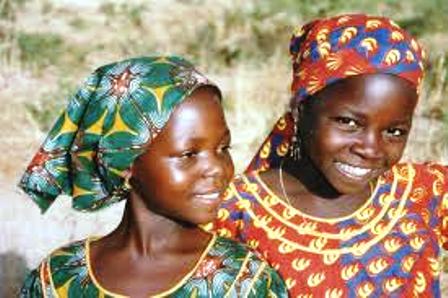 History of the Sebei or Sabiny people
History of the Sebei or Sabiny peopleModern Sebei consists of three formerly independent but closely interrelated tribes living on the northern and northwestern slopes of Mount Elgon (and on the plains below) in eastern Uganda.
The term Sebei has come into use in modern administrative parlance, and the descendants of these three tribes now identify themselves as Sebei.
Etymologically, Sebei (variously Sabei, Sapei, and so on) is a corruption of Sapiñ, the name of one of the tribes. The other two tribes are the Mbai and the Sor.
Their territory was curtailed by the drawing of the Kenya-Uganda border, for Sapiñ formerly extended into modern Kenya on the eastern side of the mountain and onto the Uasin-Gishu Plateau.
In language and culture, the Sebei are closely affiliated to the people on the southern slopes of Elgon; indeed, modern politics largely severed these close ties, though a good deal of intermarriage and movement between the territories and some psychological identity remain. This last has been reinforced by modern political leaders, who formed the Sabaot Union (people who use the greeting, supay) as a pressure group.
The union includes the three Sebei tribes in Uganda and their sister tribes on the Kenya side of the border, Bok, Kony, and Boηom ( Kipkorir, 1973:71). The research reported in this volume, however, applies only to the three tribes in Uganda who identify themselves as Sebei.
The circum-Elgon Sabaot tribes are a closely affiliated cluster of the group of tribes now known as Kalenjin. Tucker and Bryan ( 1962:137) define this term as follows:
Clan, Kin, and Age-Set
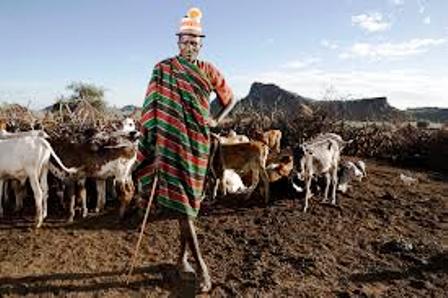
Sebei prayer to the good and evil spirits.
Oh, here is drink for all of us; even our grandfathers, even our fathers; all the old women and all the old men; even our uncles who have gone below. Drink ye! Watch over us that we may love, that the people should be in peace. Even the cows and goats should increase and have long life. You who are evil, you drink and go away; do not return to this house. Away!
The remaining elements in the formal structuring of Sebei society are the kin-based organizational units, clan and lineage; the kinship terminology and the patterning of interpersonal relationship based on consanguinity and marriage; and the age-set structure.
In dealing with each of these subjects, our attention will be directed both to its traditional organization (as it existed at the time of first European contact) and to its present operation, examining the structural elements, the functional use, and the psychological involvements of these institutions.
Clan and Lineage
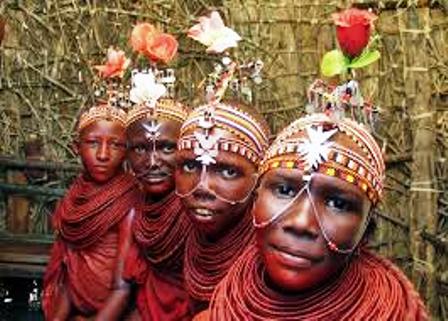
Each Sebei belongs to a clan (aret, arosyek, pl.), a patrilineal, strictly exogamous, named social entity. Aret membership is the most important affiliation in a man’s life; it is the first thing a person wants to know about a stranger.
A man cannot change clan affiliation, except as clans may split apart. Clans have a strong spiritual hold on their members and are even seen as having a kind of genetic inheritance of traits.
There are some two hundred separate clans among the Sebei, though a definitive list cannot be made. Each clan is composed of the descendants of a single founder, and usually its name is formed by prefixing the syllable kap (descendants of) to the founder’s name. Some, however, have names derived from mythic accounts or some habit or practice attributed to the founder.
The Ritual Transformation from Child to Adult
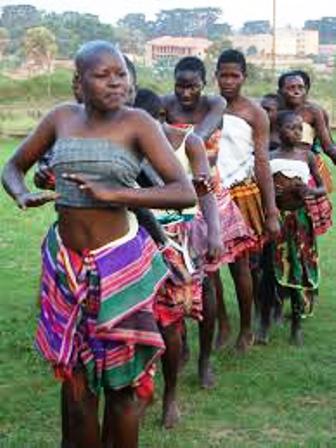 The Ritual Transformation from Child to Adult
The Ritual Transformation from Child to AdultMy stomach is churning;
Mother is very worried,
I do not think that you will be brave tomorrow.
Mother’s circumcision song
The ceremonial activities (meriket) that mark the transition of Sebei boys and girls into adult status are the most important and dramatic events of Sebei life today and probably have always been so.
The ceremonial cycle may take one to six months to complete.
Boys generally undergo the initiation at eighteen to twenty years; girls a couple of years younger.
There are two major and several minor elements in the cycle: the first has as its central feature the circumcision of the boys and a counterpart operation, involving the severing of the whole labia minora, for the girls.
(This is also called circumcision locally, and I shall follow this practice, although it should perhaps be called labiodectomy, for it is not merely a clitoridectomy.)
There follow minor ceremonies of shaving, painting, and partial release from seclusion taboos. The cycle culminates with the second major ritual events, allocating the initiates to their appropriate age-sets and signalizing their reentry into the normal activities of society.
Our presentation is built on several sources. We watched six first ceremonies involving the circumcision of thirty-three girls and ten boys. These were in Atar, Kabruron, and Bukwa in 1954 (all girls); in Sasur, Kapsirika, and its neighboring village of Nyelit in 1962, the first of girls, the second coeducational, and the third of boys.
We watched the shaving, painting, and release ceremonies once each, and we watched, to the extent we were permitted, three closing ceremonies.
In addition, we held many discussions with informants about the ceremony and the subjective aspects of their experience.
There was little objection to our observing the first and middle phases of the ceremonies, but we were denied permission to observe the ceremonies in which the secrets are imparted or to see the “animals” (tiyonik), as the medicines are called
More about Afican Culture
Kenya Art |
Kenya Festivals |
Kenya Gender Issues |
Kenya Gestures |
Kenya Greetings |
Kenya History |
Kenya Language |
Kenya Literature |
Kenya Modern Culture |
Kenya Music |
Kenya National Anthem |
National Dress Cord of Kenya |
Kenya People |
Kenya Respect |
Kenya Taboos |
Kenya Television and Culture |
Kenya Culture | Akamba | Bantu | British Colonialists | Crafts | Cultural Business Meetings | Cultural Communication | Cultural Eye Contact | Cultural Gestures | Gift Giving | Cultural Law | Cultural Music | Cultural Space | Cultural Time | Kenya Art | Kenya Festivals | Kenya Gender Issues | Kenya Gestures | Kenya Greetings | Kenya History | Kenya Language | Kenya Literature | Kenya Modern Culture | Kenya Music | Kenya National Anthem | National Dress Cord of Kenya | Kenya People | Kenya Respect | Kenya Taboos | Kenya Television and Culture | Kenya Cultural Origins | Kenya Student Rules | Kikuyu People | Luo in Kenya | Masai People | Samburu People | Student Class Rules | Banyankole People | Masaba People | Madi People | Lugbara People |
Lango People | Bakiga People | Karamajong People › | Kakwa people › | Kadam People › |
Jie People › | Ik People › | Bahororo People › | Hima People › | Dodoth People › | Basoga People › | Banyoro People › | Bakonzo People › | Batwa People › | Basamia Bagwe people › | Banyole People › | Bagwere People › | Bagisu People › | Baganda People › | Bafumbira People › | Ateker People › | Aringa People › | Bamba people › | Alur people › | Japadhola People › | Acholi Peoole › | Toro People › | Kumam People › | Baruuli Banyala People › | Songora People › | Sebei People › | Nubi People › | Oropom People › | Samburu people › | Elgeyo People › | Orma People › | Okiek People › | Njemps People › | Nandi People › | Mijikenda People › | Meru People › | Masai People › | Luo People › | Mbeere People › | Luhya People › | Kuria People › | Kipsigis People › | Kikuyu People › | Kalenjin People › › | Kubras People › | Iteso People › | Gusii People › | Giriama People › | Gabbra People › | Embu People › | El molo People › | Tutsi People › | Tugen People › | Turkana People › | Terik People › | Taveta People › | Taita People › | Swahili People › | Somali People › | Segeju People › | Isukha People › | Rendile People › | Duruma People › | Pokot People › | Pokomo People › | Marakwet People › | Digo People › | Choyi People | Daharo People › | Boni People › | Arrow People › |
Recent Articles
-
Garam Masala Appetizers ,How to Make Garam Masala,Kenya Cuisines
Sep 21, 14 03:38 PM
Garam Masala Appetizers are originally Indian food but of recent, many Kenyans use it. Therefore, on this site, we will guide you on how to make it easily. -
The Details of the Baruuli-Banyara People and their Culture in Uganda
Sep 03, 14 12:32 AM
The Baruuli-Banyala are a people of Central Uganda who generally live near the Nile River-Lake Kyoga basin. -
Guide to Nubi People and their Culture in Kenya and Uganda
Sep 03, 14 12:24 AM
The Nubians consist of seven non-Arab Muslim tribes which originated in the Nubia region, an area between Aswan in southern
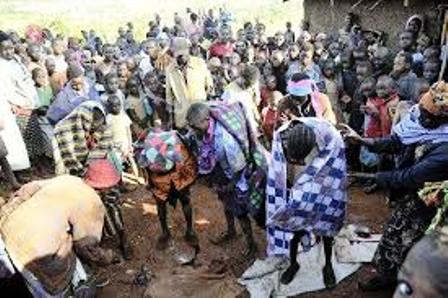
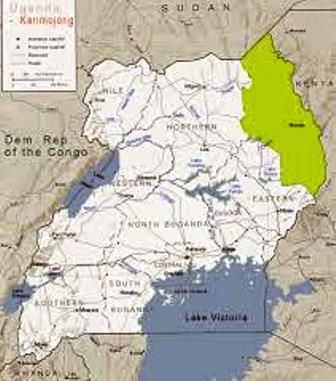







New! Comments
Have your say about what you just read! Leave me a comment in the box below.